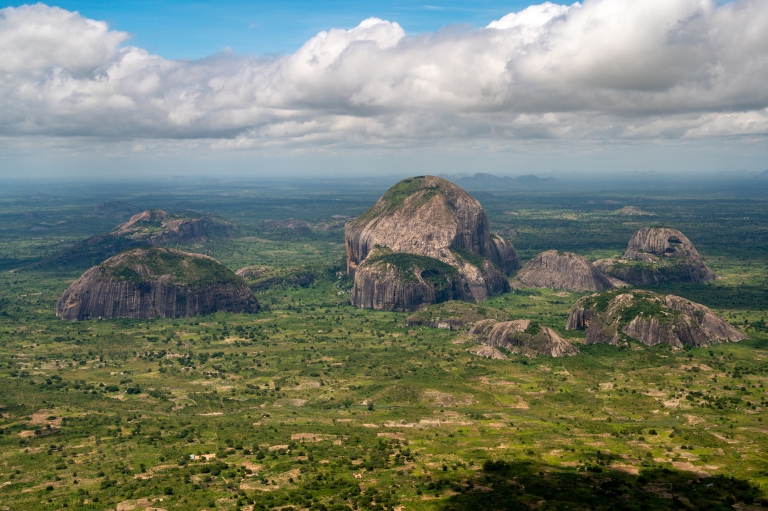For global companies looking to Nepal for new talent and expansion opportunities, understanding the country’s work visa process is critical. With a unique legal framework, stringent compliance requirements, and evolving labor laws, hiring foreign nationals in Nepal demands both precision and preparation.
This guide contains everything employers need to know about securing legal work authorization in Nepal, from visa categories and application steps to sponsorship duties and local labor regulations.
How to get a work visa and authorization in Nepal as an employer
Overview of Nepal's work visa system
Nepal offers a structured but tightly regulated process for foreign nationals seeking employment. Work visas are administered by the Department of Immigration under the Ministry of Home Affairs. All foreign employees must obtain a work permit and a corresponding work visa before commencing employment in Nepal. These documents are typically tied to a specific employer and job role.
There are multiple types of visas in Nepal, but for employment purposes, the Work Visa is the one to look at. It is usually granted based on a recommendation from the Department of Labor and Employment Promotion (DOLEP).
Importance of compliance for employers in Nepal
Employers operating in Nepal must prioritize strict immigration compliance. Any lapse can result in fines, revoked visas, or reputational damage. The government closely monitors hiring practices, especially those involving foreign nationals, to ensure that employment laws and quotas are respected.
Non-compliance can also lead to delays in hiring and visa renewals. This is particularly relevant as Nepal's labor migration policies evolve in response to economic and political shifts.
Common challenges faced by employers
Many employers face hurdles such as unclear documentation requirements, bureaucratic delays, and shifting interpretations of labor laws. Language barriers and navigating government offices without local support can also slow down the visa process.
Communication delays between agencies like DOLEP and the Department of Immigration can further complicate timelines.
Understanding work permit requirements in Nepal
Work permits in Nepal
Any foreign national seeking employment in Nepal must obtain a work permit before beginning work. This applies to both short-term and long-term assignments. Exceptions are rare and typically limited to diplomatic missions or international organizations recognized by the government.
Legal framework for employing foreign nationals
The Labor Act of 2017 and the Foreign Employment Act of 2007 outline the legal conditions for employing foreign nationals. Employers must demonstrate that no qualified Nepali citizen is available for the role before hiring a foreign worker. The Department of Labor verifies this through labor market tests.
The employer must also secure a labor approval letter from DOLEP, which then supports the employee's visa application.
Documents required for work permit application
Key documents for the work permit application typically include:
- Valid passport and visa application form
- Employment contract
- Academic and professional certificates
- Letter of recommendation from DOLEP
- Tax clearance certificate from the employer
The Ministry of Labor, Employment and Social Security may request additional documentation depending on the applicant’s profile and industry.
Types of work visas available in Nepal
Different categories of Nepali work visas
Nepal offers several types of visas, including tourist, study, residential, and work visas. The work visa category is specifically for foreign nationals employed by registered businesses or NGOs operating in Nepal.
This visa is issued based on a recommendation from DOLEP and is only valid as long as the employment contract remains active.
Duration of work visas
Work visas in Nepal are typically issued for up to one year, with the option to renew. Renewal requires updated documents, a valid labor permit, and continued compliance with Nepali labor regulations.
Extensions can be requested, but long-term employment is subject to periodic reviews and justification.
Considerations for selecting the right visa type
Foreign nationals should ensure that their visa category matches their employment purpose. Attempting to work under a tourist or business visa can result in serious legal consequences, including deportation and bans on re-entry.
Employers must clarify job roles and responsibilities early in the recruitment process to avoid visa misclassification.
Step-by-step guide to applying for a work visa
Preparing the necessary documentation
The first step involves collecting required documents, including those from the employer and employee. Employers must provide proof of registration, tax compliance, and labor approval from DOLEP.
Applicants should prepare a resume, academic credentials, and police clearance certificates from their country of residence.
Submitting the visa application
Work visa applications are submitted to the Department of Immigration in Kathmandu. Applications must include DOLEP recommendations, employer letters, and all required documents. In some cases, a personal interview may be required.
The application fee varies depending on the duration of stay and nationality of the applicant.
Timeline and processing time expectations
Processing times for work visas can range from two to six weeks. Delays are common due to missing documents or inconsistencies in employer records. Early preparation and coordination with local agencies can reduce these delays.
Employer's role in the work visa process
Sponsorship obligations and employer requirements
Employers are responsible for sponsoring the visa, verifying all documents, and maintaining compliance with local labor laws. Sponsorship includes handling visa renewals, tax reporting, and ensuring the role filled by the foreign national cannot be easily filled locally.
Ensuring successful visa authorization
Proactive planning, accurate documentation, and timely submission are key to ensuring successful visa approvals. Many businesses in Nepal hire legal consultants or global HR partners to manage this process.
Handling compliance and legal responsibilities
Employers must monitor visa expiration dates, renew labor permits on time, and file necessary reports with the Department of Immigration. Failure to do so may result in penalties or forced repatriation of the employee.
Regular audits and internal tracking systems can help businesses stay ahead of compliance issues.
Tips and resources for a successful application
Follow these tips for the best chance of success:
- Start the process early to avoid delays
- Ensure documentation is accurate and complete
- Stay updated on labor law changes via the Nepal Law Commission
- Consult local experts and legal professionals
- Leverage business resources like the FNCCI
Utilizing support from EOR providers
An Employer of Record (EOR) is a third-party entity that handles employment responsibilities on behalf of another company. For businesses looking to hire in Nepal without opening a local entity, an EOR simplifies the process greatly.
EORs manage:
- Onboarding and employment contracts
- Payroll and tax compliance
- Benefits administration
- Work visa and permit applications
- Adherence to labor laws and regulations
Working with an EOR ensures employers meet all legal obligations while focusing on core business operations.
How Velocity Global can help
Managing work visas in Nepal can be complex, especially for businesses unfamiliar with local regulations or without an established presence in-country. Velocity Global simplifies international hiring through our Employer of Record solution, which allows companies to hire talent in Nepal without setting up a legal entity.
With expertise in global immigration, HR compliance, and localized onboarding, Velocity Global helps employers manage documentation, sponsor visas, and navigate changing regulations—all while ensuring a smooth, compliant employment experience.
This information does not, and is not intended to, constitute legal or tax advice and is for general informational purposes only. The intent of this document is solely to provide general and preliminary information for private use. Do not rely on it as an alternative to legal, financial, taxation, or accountancy advice from an appropriately qualified professional. The content in this guide is provided “as is,” and no representations are made that the content is error-free.
© 2025 Velocity Global, LLC. All rights reserved.
Topic:
Immigration + Relocation



